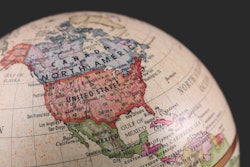
After months of decline, COVID-19, dip in global supply has triggered higher soybean prices
After plummeting amid the global tumult triggered by the novel coronavirus (COVID-19) pandemic, soybean prices have begun to creep upward amid flagging supplies.
While the U.S. Department of Agriculture’s (USDA) most recent numbers put the price of soybeans around $8.35 per bushel in April, producers and other sources report an uptick in prices since the end of May. As of early June, a bushel of soybeans was running around $8.50, according to Jim Sutter, CEO of the U.S. Soybean Export Council. By the middle of the month, prices had escalated to $8.70.
Soybean prices, which were already low going in to 2019, took a hit alongside other commodities when the COVID-19 pandemic began, Sutter said, so “soybean futures have spent the last few months hovering around 10-year lows. But in the last week or so, we’ve seen prices rally about 30 cents per bushel on the realization that Brazil is running out of supply.”
Brazil was able to undercut American soy producers thanks to its weakening currency, but Sutter said he had suspected that this low-cost source of soybeans would eventually run dry. Although predictions earlier this year projected soybeans would recover their value post-COVID faster than corn, the pandemic began too late in the year for farmers in much of the Northern Hemisphere to change crops, leading the USDA to conclude that the production of soybeans will not keep pace with the growth in demand this year.
COVID-19 has also triggered an increase in demand for soybeans, according to Sutter, because low petroleum prices and reduced demand for ethanol has resulted in a shortage of DDGS. On top of this, the production of other oilseeds such as rapeseed has declined in Europe because of changing pesticide regulations.
The biggest unknown with respect to soybean prices this year, Sutter said, is ongoing trade tensions between the U.S. and China. But Sutter was unconcerned about rumors in recent months that China would reinstate prohibitions on American commodities, pointing out that, despite those statements, purchases have continued.
“Admittedly, the situation is a little confusing,” he said, “but I have the feeling that, right now, we will continue to see purchases.”
While he didn’t expect soybean prices to soar beyond historic norms, Sutter said he didn’t see any reason why soybeans wouldn’t run $9 to $10 per bushel by the end of the year, depending on whether purchases from China continue.
“If China continues with the purchases they have committed to make,” Sutter said, “I don’t think $10 is out of the question.”
View our continuing coverage of the novel coronavirus (COVID-19) pandemic.












